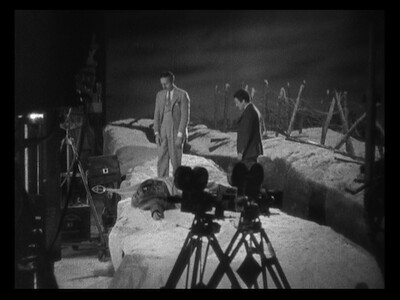
It's interesting to look at Josef von Sternberg's early filmography and see how many films he worked on without credit or was eventually fired from. Having spent some time earlier this year researching one of those projects, I was aware he had gone through some struggles between his scrappy independent debut, The Salvation Hunters, in 1925 and his first studio picture, Underworld, in 1927, but you have to admire the guy for sticking it out. Then again, given how headstrong and defiantly individualistic his films were, I guess I shouldn't be surprised.
The new boxed set from Criterion, 3 Silent Classics by Josef von Sternberg, picks up with Underworld and shows us the director's early development. Though the Austrian immigrant would eventually be best known for his sexy collaborations with Marlene Dietrich, he started off in a much different place, exploring a more realistic world than the exaggerated, opulent, and oft-times grotesque settings that would distinguish The Scarlet Empress or his Gene Tierney-led noir The Shanghai Gesture
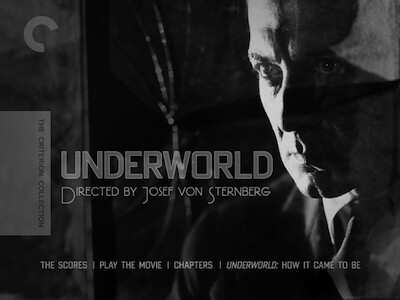
* Underworld (1927): This early gangster picture was built off a story by Ben Hecht, with a little doctoring by Howard Hawks, the guys who would eventually make the genre-defining Scarface
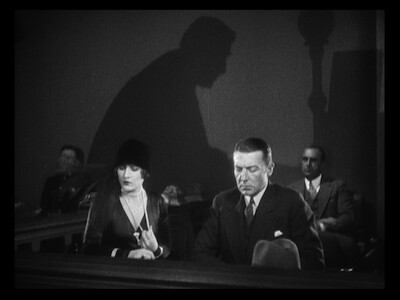
For as crazy as all the above sounds, and for how outrageous the film often looks, most of the Underworld plot is fairly conventional. Bull takes a down-on-his-luck, alcoholic lawyer nicknamed Rolls Royce (Clive Brook) under his wing, helping the brainiac get back on his feet. Bull's thanks? Royce falls for his moll, a flapper named Feathers (an alluring Evelyn Brent). Surprisingly, both feel guilty for succumbing to their sexual nature (a theme of von Sternberg's), but then, Bull is a pretty generous guy. He's the prototype of the neighborhood gangster who spreads his ill-gotten gains around. He'll sneak the money out of your pocket with one hand and give it back with the other.
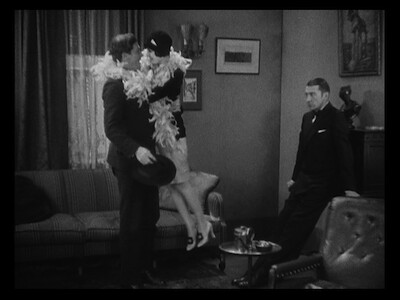
Things come to a head during Underworld's most inventive scenario. The hometown criminals hold a party every year and declare a one-night armistice. They file into a ballroom, checking their coats and guns at the door, and dance the night away. The lead bad guys campaign for their girls and get the others to vote for their favorite to be Queen of the Ball, which sets up Bull's rival, the flower-shop-owner Buck Mulligan (Fred Kohler), to make his move. Bull fights back, gets pinched, and gets in hot water.
This central event is audacious and riveting, like what the consul of criminals from Fritz Lang's M gets up to when they want to have a good time. Ticker-tape is everywhere, booze is flowing, von Sternberg even takes the time to show pranks the hoods play on one another. One montage in particular has the director's fingerprints all over it. As the night wears on, von Sternberg takes us from the point where too much booze has been consumed to the point where the dancing has ended by putting together a series of grotesque close-ups of the guys and gals, showing just their faces as the hooch takes over. They get uglier and more nauseous with each new subject. The movie is pre-Code and so frank with its bad behavior, including some pretty salacious come-ons and visual entendres. It's the perfect subject matter for the director, whose films are always erotically charged and engorged on visual metaphor. Symbols often stand in for character--the actual feathers for Feathers, the flowers for Mulligan.

The acting is all solid in Underworld. von Sternberg keeps the exaggerated gestures under control, knowing what works best for his story. The most over-the-top moments are reserved for Bancroft's laughs, which are hearty and demented. There are some narrative leaps in a jailbreak in the final act, von Sternberg leaving out some of the steps, but given how much we've seen that kind of thing before, you can fill in the gaps, I'm sure. The movie has a sentimental yet effectively existential third act that avoids some of the clichés later gangster movies would run into the ground.
Surprisingly, Paramount thought Underworld was a stinker and limited its release. Ben Hecht apparently even tried to get his name taken off. Lucky for him, he failed. Word of mouth saved the picture, and Hecht won a writing Oscar for his story.
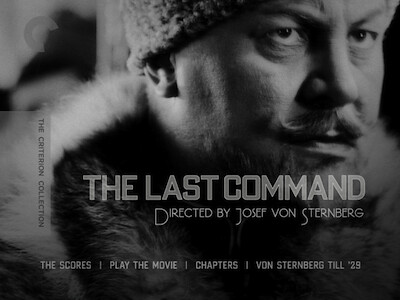
* The Last Command (1928): The great German star Emil Jannings (The Last Laugh, Faust [reviews]) stars as a former Russian general, Grand Duke Sergius Alexander, who has been exiled to Hollywood following the 1917 Russian Revolution. Sergius has taken to movie acting to make money, and as fate would have it, his first assignment is playing a Tsarist general. Little does he know, he was picked out of a pile of prospective performers by the movie's director (William Powell, The Thin Man
Cruelty is a running theme throughout The Last Command. The broken soldier is taunted by his fellow actors, who refuse to believe he is who he says he is. The general still carries around a medal the Czar gave him, it's a point of pride for him, and when we flash back to his downfall, we never see him without it. The majority of the movie takes place ten years prior, when Sergius was in charge of the front and the future film director was the head of an acting troupe that was going to perform for the soldiers. Noting that this radical influence has a pretty actress with him, Sergius decides to take advantage. He goads the director into rash action in order to arrest him, and then he takes Natalie (Evelyn Brent again) for his own.
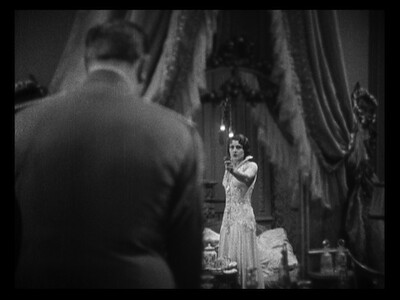
The Last Command is based partially on the life of General Lodijensky, a real Russian leader who fled to Hollywood following the rise of the Communists. von Sternberg takes a sympathetic approach to his portrayal, but it's not one that is necessarily skewed to either side. Rather, the politics and the morality portrayed are complex and often contradictory. Jannings plays Sergius as a tragic figure. He treats citizens with a misguided entitlement, but he cares for his country and his soldiers. Natalie can't help but be attracted to him, she sees he's more than a uniform and fancy medals.
Eventually, the Revolution reaches a fever pitch, and here is where von Sternberg's sense of visual drama really shines. Cutting back and forth between the heads of the army living it up on a train and the gathering of Communists in the streets, von Sternberg eventually unleashes a sea of people in a series of breathtaking scenes where the revolutionaries focus their anger on the general. This sequence combines bombastic filmmaking with imagery straight out of Communist propaganda. Yet, the freedom fighters aren't shown as heroes. When the shoes are on the other feet, they can be just as awful to their fellow man as they believe the rulers were to them.

Jannings is a powerful screen actor, and he and von Sternberg work in concert to give The Last Command the kind of sturm und drang a tragedy of this kind requires. Jannings even picked up an Oscar for his efforts. Evelyn Brent is also really good as Natalie, who has some character changes that are far different and more challenging that the character arc of Feathers in Underworld. The period re-creations look phenomenal, and the climactic scenes of the flashback--which involve a train, a bridge, and a frozen lake--are not just amazing to look at, but they carry a devastating emotional punch.

Also quite neat to look at are von Sternberg's replications of a movie set. We get to see the backstage and the cattle call of extras, and we go out in front of the cameras to see Sergius' ironic fate drawn to a close. It's an effective finish, with the old soldier caught somewhere between the bloated buffoonery of Falstaff and the sad ravings of Lear. I am not sure I quite buy Powell's final lines (as seen on a title card, naturally), the sentiment seems forced--particularly as the closing image of the quiet soundstage works so well to blur the lines between fact and fiction. It's part metafiction, part a cinematic take on the theatrical curtain call.
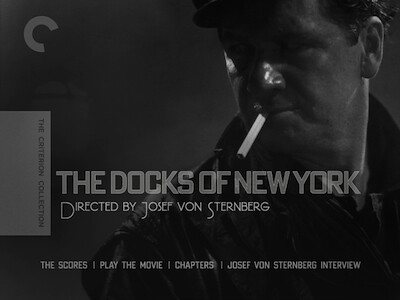
* The Docks of New York (1928): Josef von Sternberg reteamed with his Underworld star George Bancroft for the second of many movies they made together. In this one, Bancroft plays Bill Roberts, a sailor on leave for one night in New York. Bill is a "stoker," one of the guys who works in the belly of the ship shoveling coal into its big burning engine. It's dirty work, and so when Bill goes on land, he's ready to blow off some steam of his own.
Plans go a different way, though, when he happens upon Mae (Betty Compson) flailing about in the water. She means to kill herself, but Bill isn't having it. He takes her to a nearby bar to dry out, and the two end up bonding. They've both seen their fair share of trouble, and there isn't a romantic bone in either of their bodies, but this is a von Sternberg film, so the animal attraction is enough. They spend the night dilly dallying around one another, and even end up dragging a preacher (Gustav von Seyffertitz) in to perform a marriage ceremony.
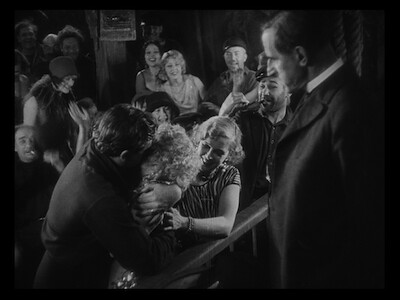
They also run afoul of trouble. The crew boss (Mitchell Lewis) from Bill's ship is drinking at the same bar, and he's got it in for Bill and wants a piece of Mae himself. His wife (Olga Baclanova) is none too thrilled with it either. There's going to be plenty of drinkin', brawlin', and carousin' before the night is through.
von Sternberg and cinematographer Harold Rosson create a rundown, realistic urban landscape for The Docks of New York. The bar that the couple spend most of their time in looks seedy, and Mae's apartment is falling apart. Scenes down in the bowels of the ship are remarkable documents of the industrial setting. The fire light and the glistening oil make Bill's world both hellacious and majestic. von Sternberg choreographs each scene down to the finest detail. Watch the mirrors in the bar. Just because Mae and Bill are alone in the foreground doesn't mean there isn't something going on in the background. von Sternberg sets it up so we can see the other patrons in the glass behind them, and they react and interact with what is in front of the camera.
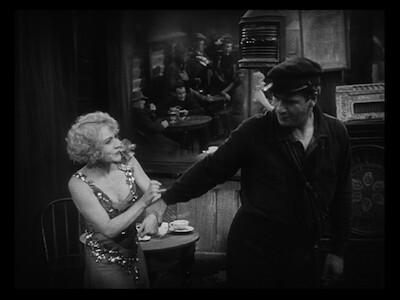
Bancroft is excellent again. Bill doesn't have the magnanimity or expressiveness of Bull Weed, but the actor does manage an interior life for him. Much seems to be going on when he looks at Mae. Betty Compson is also very good. She is sexy and has attitude, but she's also weary. That said, the scene stealer is easily Olga Baclanova. She pulls off so much just by the way she stands, hand on hip, hip cocked out. She's getting fed up, and it shows.
Naturally, Bill wakes up the next morning with no real intention of sticking around with Mae, even though she kind of wishes he would. It's the first sentimentality that von Sternberg has allowed to creep into the picture. This is a love affair that is practical, not magical. That makes the little ground the two eventually do give to each other all the more meaningful. It took a lot for them to take those baby steps.
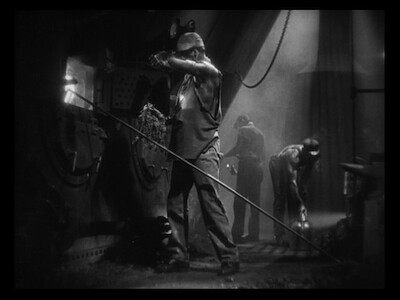
3 Silent Classics by Josef von Sternberg is one of my favorite boxed sets to come along this year. All the films are both engrossing to watch and to look at. von Sternberg had an individualistic personality, and his vision shows in every frame. From the gangster chic of Underworld to the period war drama The Last Command and through the stark melodrama of The Docks of New York, he was developing his craft and establishing a style that was all his own.

For a full rundown on the special features, read the full review at DVDTalk.

No comments:
Post a Comment